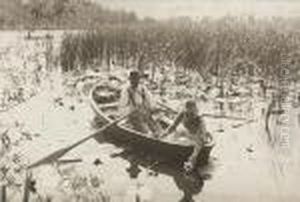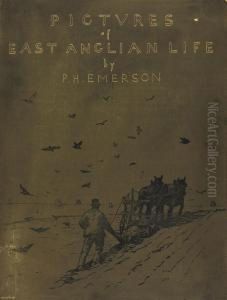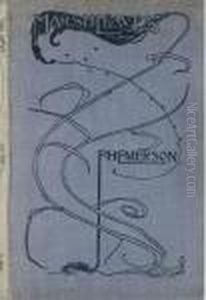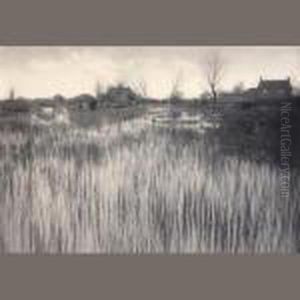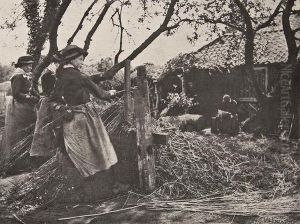Peter Henry Emerson Paintings
Peter Henry Emerson was a British photographer and writer who played a key role in the fight for photography to be recognized as an independent art form in the late 19th century. Born on May 13, 1856, in La Palma, Cuba to American and British parents, Emerson spent much of his early life in the United States before moving to England for his education. He studied at King's College London and later at Clare College, Cambridge, where he earned a medical degree in 1885. However, his interest in photography quickly overtook his medical pursuits.
Emerson is best known for his works in naturalistic photography and his outspoken views on the artistic merits of the medium. He believed that photography should reflect the reality of what the eye sees, rather than imitating the styles and traditions of painted art. This philosophy was detailed in his 1889 book 'Naturalistic Photography for Students of the Art', in which he argued against the manipulated and composite images that were popular at the time, advocating for a more truthful and direct approach.
Emerson's photographic work often focused on the landscapes and people of the Norfolk Broads in Eastern England. His images are characterized by their soft focus and use of differential focus, which he felt mimicked the human eye's perception more naturally than the sharp images that were in vogue. In the late 1880s and 1890s, Emerson published a series of photographic picture books, including 'Life and Landscape on the Norfolk Broads' (1886) and 'Pictures of East Anglian Life' (1888), which were influential in promoting his views on naturalistic photography.
Despite his strong opinions, Emerson's views on photography evolved over time. In the 1890s, he made a public reversal of his stance on the ability of photography to be considered fine art, which led to some controversy and a temporary decline in his influence within the photographic community. Nevertheless, his early work and writings continued to be a reference for photographers who sought to elevate the medium beyond mere mechanical reproduction.
Emerson continued to photograph and write until 1895, when poor health and eyesight led him to retire from photography. He spent the remainder of his life involved in various pursuits, including ornithology and writing. Peter Henry Emerson passed away on May 12, 1936, in Falmouth, Cornwall, England. Today, he is remembered as a pioneering figure in the development of photographic art, and his works are held in the collections of major museums and galleries around the world.
